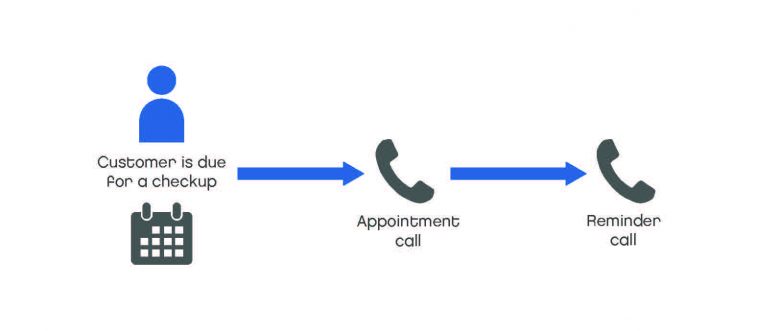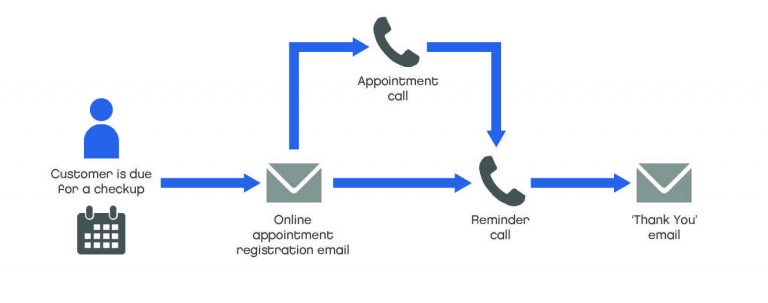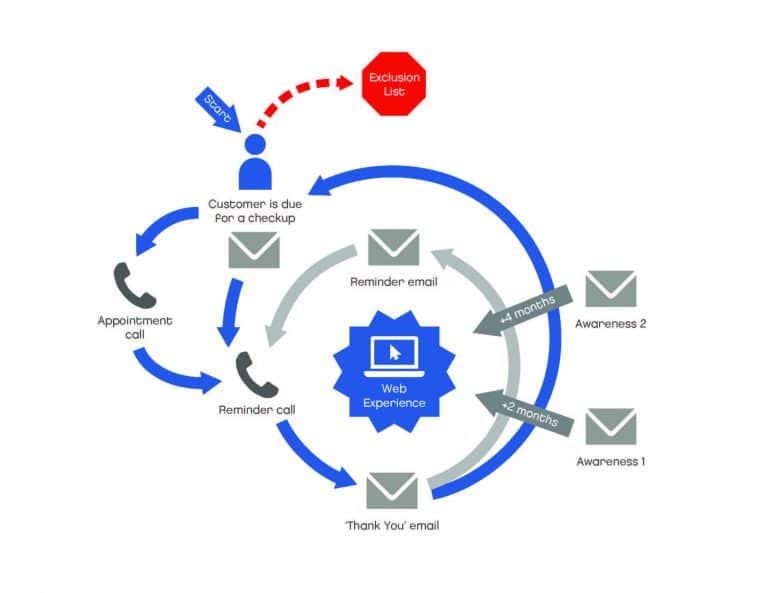Creating a Customer Journey in the World of Enterprise Marketing
Creating a Customer Journey in the
World of Enterprise Marketing
Discover How Integrating AEM with Adobe Campaign can Enhance your Omni-Channel Marketing Practice
As a Business Solutions Consultant, my engagements tend to be short and sweet – yet very frequent. Through my years of experience, I have come to notice an uptick in the use of customer journey maps for the world of Enterprise Marketing. To provide some clarity on this concept, which may be a strange idea for new marketers – or at least the implementation of it – we will examine a fictional campaign and develop it over a series of steps.
What is a Customer Journey?
So, before I begin, and as I mentioned above, some of you are probably wondering “what is this customer journey you speak of?” As for others, the topic of customer journeys may already be familiar to you; and rightfully so, this is not a new concept by any means. In fact, I even sourced a couple of links from the McKinsey & Company website – one of which is an article published from 2009!
The concept of a customer journey focuses on the steps and interactions a customer undergoes before committing to purchase. It is an evolution of the traditional funnel model where a client starts with a list of potentials, they then begin eliminating products one-by-one, until finally choosing a winner. On the other hand, the customer journey model recognizes that most customers start with a list and then add-and-remove products as they go along. More importantly, the journey model also accounts for the fact that the decision process can be disturbed mid-way by new players entering the fray.
Case Study: My Dentists
To effectively illustrate how a customer journey works, we will use a hypothetical case study. This fictional campaign will focus on my dentist, regular check-ups, and his customer retention program. In laymen’s term, how I get called twice a year to schedule and get reminded about my appointments.
Since we are looking at this from the enterprise marketing perspective, we need to make a few of assumptions:
- There is a list of customers and prospects;
- We have been given consent to market to the list;
- For the most part, we will be ignoring the technical challenges.
At the same time, we also need to make some assumptions on the details of their current campaign:
- The primary communications channel is the phone;
- Five months after the customer’s last appointment, they receive a phone call to set up another one;
- The customer receives a reminder call one day before the date;
- The cycle then repeats.
In the case of other services (fillings, root canals, and so forth), these appointments are scheduled just like regular check-ups; however, there is no need to reschedule every six months.
Now that we have established our scenario, let us look at the two primary reasons why my dentist would be interested in enhancing the customer journey:
- Better customer experience: This is the first consideration of the journey, as we want to make sure outside players have a hard time disrupting the sales process.
- Service a larger numbers of customers without increasing staff or workload: This is the second part of the model, where we focus on improving productivity through campaign automation.

Figure 1: Current state of the Campaign
The current set up has all the hallmarks of a marketing campaign. There is a triggered event (check-up date), there are two touch points with the client, and finally, there is a conversion (services rendered). This simple process is a good start; however, this is by no means a complete customer journey.
Let us bring in some additional technology so that my dentist can reach out to clients through other channels. Logically, the next step would be to set up a few automated email communications. One to invite customers to register for their next appointment – either by phone or online – and a second to thank the client for their visit and to encourage them to set up another appointment six months from that date.
With these channels in place, our campaign would now look like this:

Figure 2: Not a complete journey
At this stage, some organizations would start calling Figure 2 a journey. However, I must disagree. To the trained eye, Figure 2 is simply a multi-touch campaign over two different channels. The more experienced campaign manager will also identify multiple concerns with our hypothetical campaign. Here is why:
- If the ‘Thank You’ email allows a customer to register for their next appointment, then what happens to the first communication in the chain?
- What if the client forgets, or changes his mind, in the next six months?
What is missing here – and is one of the first steps of turning this campaign into a journey – is the link between the ‘Thank You’ email and our initial contact communication. I would propose an additional link making the campaign look more like this:

Figure 3: Still not a journey – but close!
At this stage, our customers are capable of booking future appointments themselves, or they can simply let the system remind them. As for those customers who prefer phone calls, that channel is still available. We are also checking off one of the more relevant check boxes to ensure a smooth customer experience (to properly continue with this case study, we will also assume that the website for booking appointments works correctly.)
However, we are still missing a way to nurture the relationship with the client to efficiently ensure that competitors do not sway them during the decision process. Additionally, this is also an excellent opportunity to provide additional value to the customer. To do both these things, we add two other communications into the regular cycle. For the sake of this example, these communications will be sent out two and four months after the initial check-up, respectively. Additionally, we will want to ensure a seamless customer experience on the website. To do so, a customer that clicks on the registration link in their email should have their information pre-filled in the online form, leaving them with just having to select a date.
Finally, we need to make the journey campaign more responsive to the signals our customers are sending us. As you will recall, we already started addressing this point in Figure 3 by calling the customer if they failed to register on the email.
To do so, we will:
- Override our check-up campaign if the customer is undergoing other procedures.
- Create an Exemption List to send fewer email communications to clients that do not engage in emails or on our website (no email opens, no registrations, no article clicks, and so forth)
After making all these adjustments, our journey campaign will start looking more like this:

Figure 4: A more complete journey!
With all these changes, the above campaign begins to fulfill the objectives we initially identified – along with addressing the customer’s state – while providing added value. Here are the key success points we need to remember:
- Our online experience allows more bookings without significantly increasing the load of the administrative staff. It might even lessen the load if existing customers adopt the process.
- The awareness messages promote our brand recognition, ensuring we are on the initial list of potential service providers.
- The reminder email and phone call ensure our customers can register for their check-up promptly and through their preferred contact channel (a preference we can start storing for the future!)
- Finally, our Exemption List ensures that we stay mindful of the current state of our customers and do not over-market to them or propose them unnecessary check-ups.
The result of this campaign should be a better retention rate and increased customer satisfaction – something we should remember to measure, but we will keep that for another article.
References:
Court, D. (2009, June). The consumer decision journey. Retrieved February 3, 2017, from McKinsey & Company, https://www.mckinsey.com/business-functions/marketing-and-sales/our-insights/the-consumer-decision-journey
Edelman, D., & Singer, M. (2015, October). The new consumer decision journey. Retrieved February 3, 2017, from McKinsey & Company, https://www.mckinsey.com/business-functions/marketing-and-sales/our-insights/the-new-consumer-decision-journey
Talk To Our Experts Today
All fields marked * are required
Sales Inquiries + 1 (514) 223 3648
General Inquiries + 1 (514) 392 9822
sales@munvo.com
© 2024 Munvo is a trademark of Munvo Solutions Inc.

The Importance of Business Process Management


